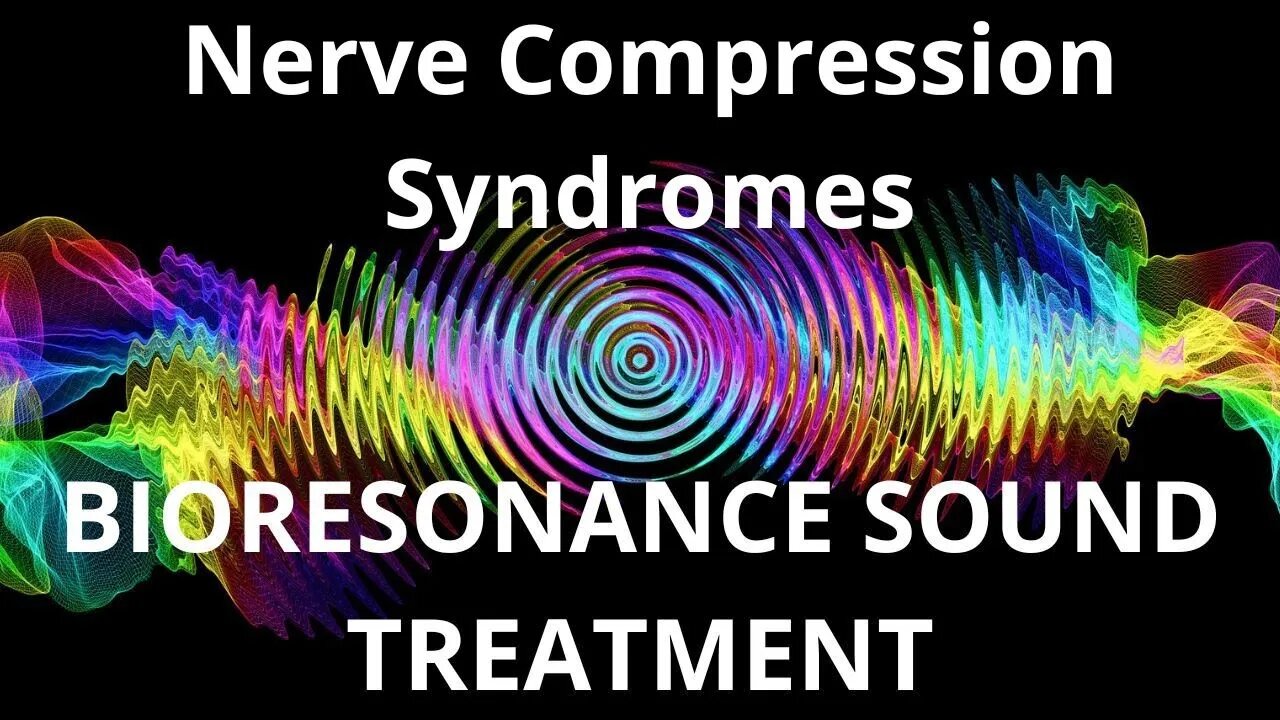Premium Only Content

Nerve Compression Syndromes_Resonance therapy session_BIORESONANCE SOUND THERAPY
Nerve compression syndrome occurs when a nerve is squeezed or compacted. It typically occurs at a single location. Nerves in the torso, limbs, and extremities may be affected. Common symptoms include pain, numbness, and muscle weakness at the site of the nerve.
Nerve compression syndromes are often caused by repetitive injuries. Medical conditions such as rheumatoid arthritis, diabetes, or hypothyroidism can also play a role.
Nerve compression syndrome is also known as:
nerve entrapment syndrome
compression neuropathy
entrapment neuropathy
trapped nerve
Carpal tunnel syndrome is the most common type of nerve compression syndrome. It occurs when the median nerve is compressed at the wrist. The median nerve extends from the upper arm to the thumb. At the wrist, it passes through a structure called the carpal tunnel. Excess pressure on the wrist may cause swelling, which can lead to carpal tunnel syndrome.
Cubital tunnel syndrome is the second-most common type of nerve compression syndrome. Also known as ulnar neuropathy or ulnar nerve entrapment at elbow, it occurs when the ulnar nerve is compressed at the elbow. The ulnar nerve is responsible for the sensation that you get when you hit your funny bone. It passes close to the skin at the elbow. Putting too much pressure on the elbow may cause swelling, which can lead to ulnar tunnel syndrome.
Nervecompression syndrome is most likely to occur at sites where nerves pass through tunnel-like structures. The following are some rarer types of nerve compression syndrome:
Suprascapular nerve compression syndrome. This affects the suprascapular nerve and can cause symptoms in the shoulder.
Guyon’s canal syndrome. This syndrome affects the ulnar nerve and can impact function in the hand.
Meralgia paresthetica. This affects the lateral cutaneous nerve and can cause symptoms in the outer thigh.
Radial nerve compression syndrome. This syndrome affects the radial nerve, which extends the length of the arm. It can impact wrist, hand, and finger function.
Music affects a person, it can calm and cheer up, sounds can heal. The therapeutic effect is due to the frequency fluctuations of various sounds that resonate with various organs of the body. Sounds have bioresonance compatibility with the vibrations of human internal organs, which is the basis of the positive effect of sound treatment. The sound vibrations of music trigger many mechanisms of higher nervous activity in the patient's subconscious and start the healing process.
Sound therapy does not replace medical treatment, but complements it, improves the positive dynamics of treatment and speeds up recovery.
TO ACHIEVE A POSITIVE RESULT, DAILY LISTENING TO VIDEOS IS REQUIRED.
I wish you health and prosperity!
You can purchase unique medicines in my store:
https://store11998180.company.site/
You have the opportunity to support the channel:
https://destream.net/live/RadSiarAl/donate
-
 5:42:36
5:42:36
FreshandFit
9 hours agoLive X Censorship For Opposing Immigration?!
90.2K66 -
 1:08:16
1:08:16
Tactical Advisor
5 hours agoNEW Budget Glocks | Vault Room Live Stream 011
30.1K3 -
 16:30
16:30
SNEAKO
12 hours agoNO FRIENDS IN THE INDUSTRY.
62.9K17 -
 6:19
6:19
BlackDiamondGunsandGear
23 hours agoHow Fat Guys can Appendix Carry
35.8K2 -
 6:58
6:58
Gun Owners Of America
1 day ago2024 Was Huge For Gun Rights, Here's Our Top 10 Wins!
33.9K1 -
 15:50
15:50
Degenerate Jay
1 day ago $1.49 earnedJames Bond Is Being Ruined By Amazon? Make Him A Black Gay Woman?
25.6K9 -
 15:18
15:18
DeVory Darkins
1 day ago $13.64 earnedTrump Drops NIGHTMARE Warning on Joe Biden
41.4K53 -
 36:13
36:13
The Why Files
1 month agoAlien Implants Vol. 1: Devil’s Den UFO Encounter: What Was Found Inside Terry Lovelace?
71.3K39 -
 9:03
9:03
Alabama Arsenal
1 day ago $0.48 earnedAAC HUB 2K | Modern Features, Iconic Classic Looks
12.3K1 -
 13:49
13:49
Dermatologist Dr. Dustin Portela
2 days ago $0.87 earnedDermatologist Reveals the Worst Things To Do To Your Skin
10.2K2